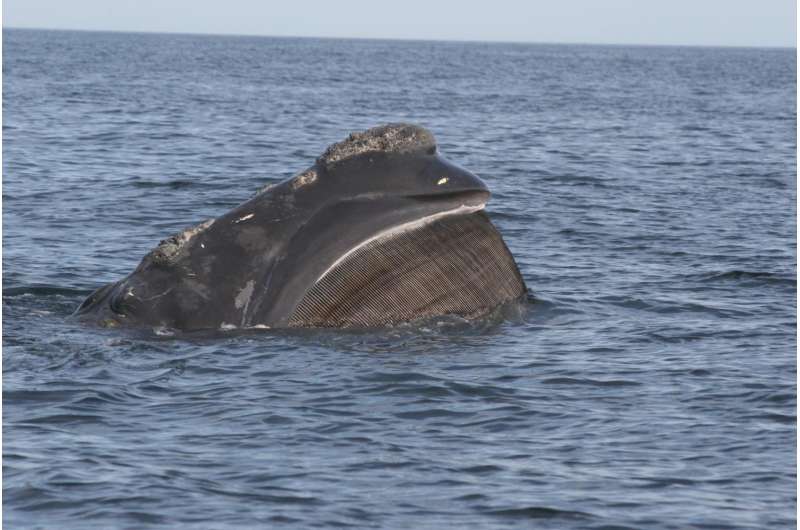Method to estimate abundance, trends in North Atlantic right whales confirms decline

NOAA Fisheries researchers and colleagues at the New England Aquarium have developed a new model to improve estimates of abundance and population trends of endangered North Atlantic right whales, which have declined in numbers and productivity in recent years. The findings are published in the journal Ecology and Evolution.
Between 1990 and 2010, the abundance of North Atlantic right whales increased just under three percent per year, from about 270 animals in 1990 to 482 in 2010. After relatively steady increases over that time, abundance has declined each year since 2010 to 458 animals in 2015. The analysis shows that the probability that the population has declined since 2010 is estimated at 99.99 percent. Of particular concern is decline of adult females in the population, estimated at 200 in 2010 but 186 in 2015, the known deaths of 14 North Atlantic right whales this year, and the widening gap between numbers of males and females.
"Although our work directly reveals a relatively small decrease, the subtext is that this species is presently in dire straits," said lead author Richard Pace.
Pace is a large whale researcher at NOAA's Northeast Fisheries Science Center. Other authors include NEFSC whale researcher Peter Corkeron, and Scott Kraus of the New England Aquarium.
The new statistical method reported today provides a clearer and timelier picture of North Atlantic right whale numbers. While both existing methods and the new statistical method for estimating North Atlantic right whale numbers show a decline in the population since 2010, the new estimates are less affected by changes in whale distribution, less reliant on sighting frequency, and better account for animals that are still alive but are not frequently seen.
In the past few years, these whales have not aggregated as consistently at the times and places where they have in the past. This reduces the likelihood that they will be sighted since survey efforts are most efficient when conducted while whales are coming together in larger groups to feed, calve, and care for young. This change in behavior has made the census-based estimate of their populations less reliable than in the past, and led to development of the new statistical model for estimating abundance.
The New England Aquarium has conducted research on right whales for more than three decades and also maintains the North Atlantic Right Whale Catalog. All methods for estimating abundance rely extensively on this record. The catalog combines information on individually identified North Atlantic right whales collected through annual surveys undertaken by a variety of researchers. The result is a comprehensive photographic census of the population for at least the past 25 years.
For this study, data from more than 61,000 sightings were reviewed. Analysis included sighting histories from 658 whales, including 280 females, 328 males and 50 animals of unknown sex. Of the 658 whales seen during the study period of 1990 to 2015, 247 were first seen before 1990.
NOAA Fisheries works directly with fishermen and shipping companies to reduce harm that can be caused if whales entangle in gear or collide with ships, two well-documented causes of whale deaths and serious injuries, and with researchers throughout the region to understand the biology and condition of animals in the population. The agency is also assisting Canadian officials and scientists with their efforts to reduce risks to these whales in Canadian waters.
More information: Richard M. Pace et al, State-space mark-recapture estimates reveal a recent decline in abundance of North Atlantic right whales, Ecology and Evolution (2017). DOI: 10.1002/ece3.3406
Journal information: Ecology and Evolution
Provided by NOAA Headquarters
















